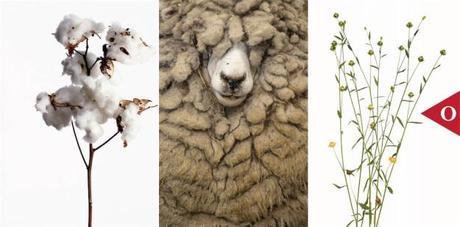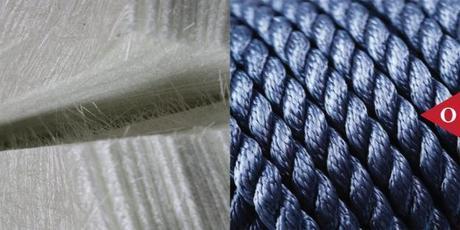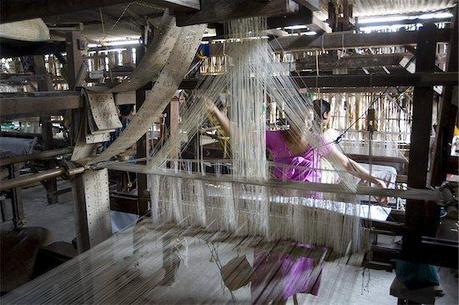By @MissBeik (la version française suit)
We always need to buy clothes, either as a necessity or simply by desire. Each piece of clothing has its own maintenance requirements depending on the types of fibers used. Some fibers are too delicate for the washing machine or dryer and in some cases, both. Some may shrink, fade or start pilling – fluffy fiber balls formed by friction over time. Do you sometimes buy clothing in a larger size in order to avoid any future problems? Do you abstain from certain fabrics to avoid these issues? Do not worry, because this article will give you the proper knowledge to avoid these situations. You will once again be able to enjoy both fabrics and colors.
Que ce soit par nécessité ou par désir, nous avons tous besoin d’acheter, un jour ou l’autre, des vêtements. Fabriqué avec de multiples fibres, chaque vêtement a son entretien. Certaines fibres ne tolèrent pas la laveuse ou la sécheuse et parfois même les deux. Certaines rétrécissent, déteintes ou boulochent – boules de fibres pelucheuses formées par frottement ou usure du tissu. Afin d’éviter tout problème, vous arrive-t-il d’acheter vos vêtements plus grands? Condamnez-vous certaines matières afin de ne pas regretter votre achat après l’entretien? Ne vous en faites plus. Après cet article, vous n’aurez plus peur d’oser les matières et les couleurs.


Cotton, wool, linen
Let’s begin with a simple explanation. There are two main categories of fibers: natural and synthetic. It’s important to know that each type of fiber reacts differently. Natural fibers are more difficult to maintain than synthetic fibers. Here are some examples to help you understand these fibers:
- Cotton is the one type of natural fiber that has a strong resistance to both the washing machine and the dryer. However, it has a tendency to shrink a little because of the high temperature.
- Wool stretches when it’s suspended and it shrinks when you iron it or use the dryer.
- It’s preferable to proceed with professional dry cleaning or use the delicate wash cycle for linen and silk because there are very delicate fibers. Be sure to check the tag on your clothing for washing instructions!
Afin de rendre cela simple, commençons par ceci. Il y a deux principales catégories de fibres : les naturelles et les synthétiques. Il est important de savoir que chaque matière réagit différemment et les fibres naturelles sont plus difficiles d’entretien que les fibres synthétiques. Voici quelques exemples pour vous aider à mieux connaître ces fibres:- Le coton est la fibre naturelle qui résiste le mieux au lavage et au séchage. Cependant, il rétrécit un peu à haute température.
- La laine s’agrandit lorsque nous la suspendons et rétrécit lorsque nous la séchons ou la repassons.
- Il est préférable de procéder pour le lin et la soie à un nettoyage à sec ou à un lavage à cycle délicat lorsque qu’indiqué puisque ce sont des fibres très délicates.

polyester, nylon
For synthetic fibers such as polyester, viscose (also known as rayon), nylon and spandex, problems are usually minimal but important. Since these are artificial or chemical fibers, they tend to have a weak resistance to high temperatures. The main problem here is that using an iron set to a high temperature, can burn the fabric. It’s therefore advisable to iron each piece of clothing inside out and to test the heat settings beforehand. Pour ce qui est des fibres synthétiques comme le polyester, la viscose (aussi appelée la rayonne), le nylon ou même l’élasthanne, les problèmes sont minimes, mais importants. Comme ce sont des fibres artificielles ou chimiques, certaines résistent mal à une température très élevée. Nous pouvons surtout faire référence ici au repassage. Il est donc conseillé de repasser tous vos vêtements à l’envers et de tester la chaleur pour être certain que le fer à repasser ne laisse pas de marques sur l’étoffe.

Fabric composition can be confusing. However, there is no reason to be afraid as you can simply take the highest value of percentages and rely on that one for maintenance. For example, if you have a denim piece that is made of 97% cotton and 3% spandex, the cotton is the dominant fiber, and can therefore shrink. There are other situations where you must take the entire composition into account. For example, a top that is made of 50% wool, 30% cotton and 20% acrylic would require you to take note of the composition since the percentages are almost equal. Since the wool is the dominant fiber, it shrinks easily and stretches when you hang it. Encore là, la composition du tissu peut vous mêler. Ne craignez rien. Il suffit de prendre le plus gros pourcentage et vous y fier pour l’entretien. Par exemple, si vous avez un denim de 97% coton et 3% élasthanne, le coton est prédominant, donc il peut rétrécir. C’est certain qu’il faut considérer la composition en entier s’il y a, par exemple, un tricot fait de 50% laine, 30% coton et 20% acrylique puisque les pourcentages sont presque tous égaux. Mais comme la laine reste prédominante, il rétrécit facilement et allonge lorsque suspendu.

Finally, the best way to compare natural and synthetic fiber is to touch it. Just go with what you feel. Natural fibers are more textured, fluffy and rough depending of the material used. While on the other hand, synthetic fibers have a more plastic-like feeling. Dernièrement, si vous voulez faire la différence entre une fibre naturelle ou synthétique, c’est assez facile, il suffit de la toucher. Allez-y vraiment au feeling! Les fibres naturelles sont souvent plus texturées, pelucheuses, rugueuses dépendamment de la fibre tandis que les fibres synthétiques ont plutôt la texture de plastique.
Photos: masterfile.com, moulage-polyester.com,
